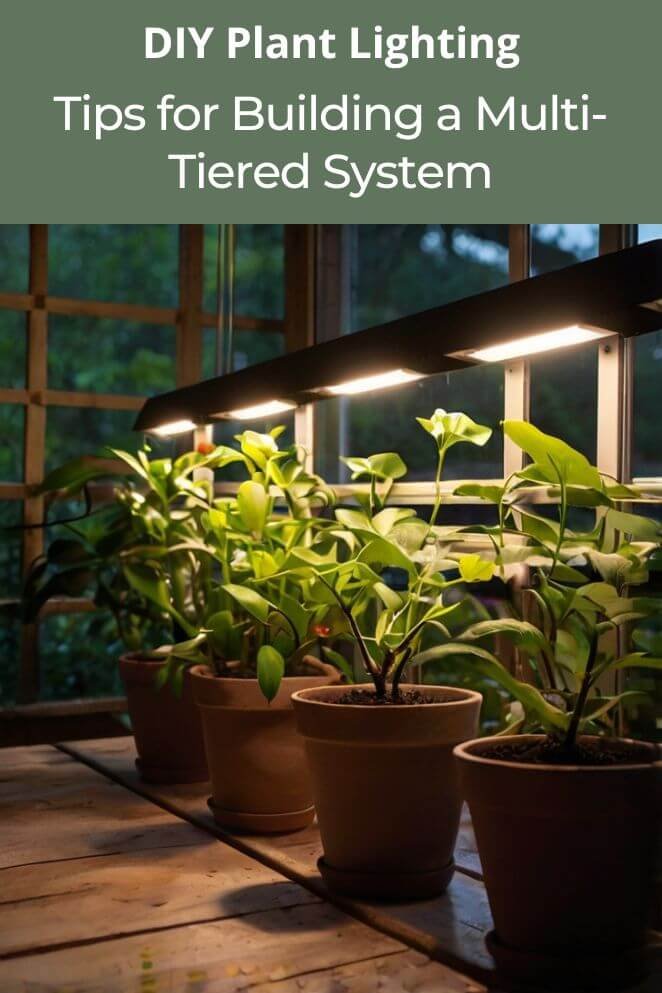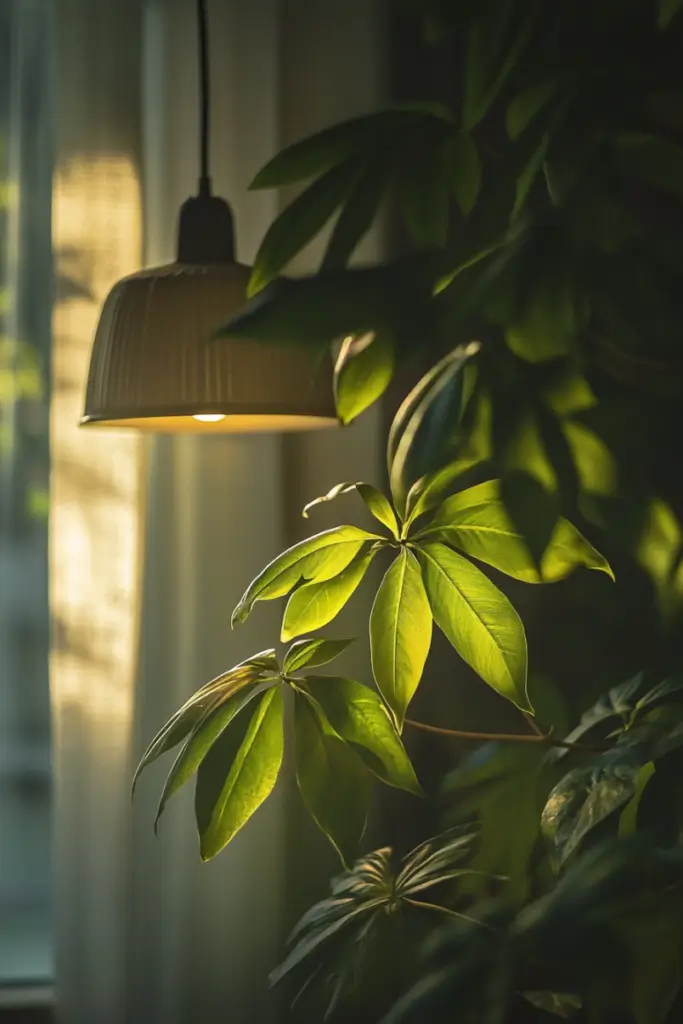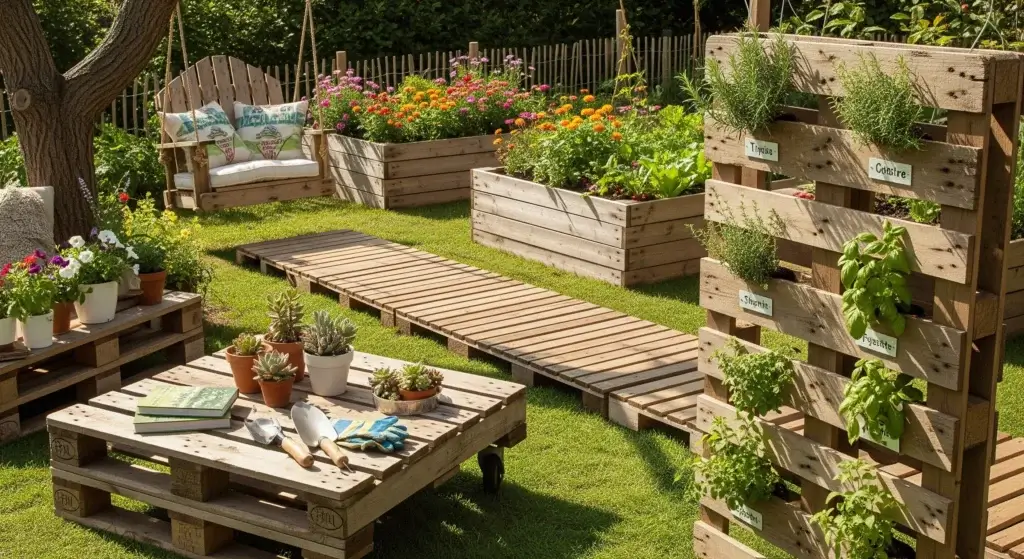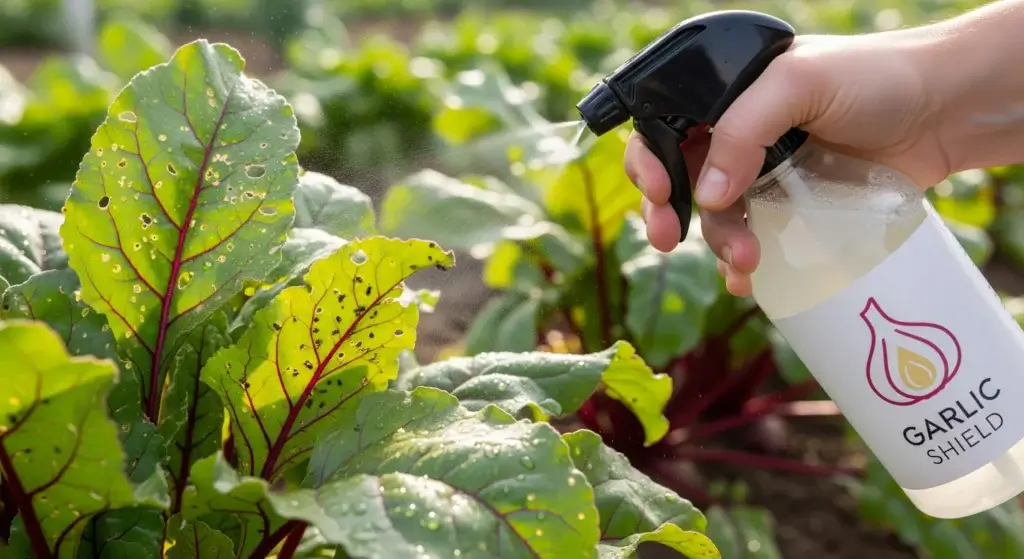
Growing plants indoors is a great way to enjoy greenery year-round, even if you don’t have access to a sunny garden.
But without enough natural sunlight, your plants can struggle to thrive.
That’s where plant lighting comes in.
Whether you’re growing herbs, vegetables, or houseplants, proper lighting is key to their success.
And the best part?
You can create your own DIY plant lighting setup right at home without breaking the bank!
Materials Needed
Before diving into the DIY process, let’s gather the materials.
Here’s what you’ll need for a simple but effective plant lighting system:
- LED grow light bulbs (full-spectrum recommended)
- Lamp or light fixtures (clip-on or hanging fixtures work well)
- Power strip with a timer
- Mounting hooks or brackets (for hanging lights above plants)
- Light reflectors (optional but improves light efficiency)
- Measuring tape and zip ties
- Surge protector for safety
- Light meters (to measure light intensity, optional)

Step-by-Step Guide to Create DIY Plant Lighting
Creating effective lighting for indoor plants doesn’t have to be complicated.
Here’s a straightforward guide to setting up your own plant lighting system:
- Read also: Grow Your Own Flavor: The Easy DIY Windowsill Herb Garden
- Read also: Grow Fresh Anywhere: Create Your Own DIY Mobile Herb Garden
Step 1: Choose your light source
For indoor plants, LED grow lights are a top choice.
They are energy-efficient, long-lasting, and provide a full spectrum of light that plants need to grow well.
Look for LEDs with a color temperature between 5,000K and 6,500K, which mimics natural daylight and supports healthy plant growth.
Studies show that LEDs are more effective and energy-efficient compared to traditional fluorescent lights.
Step 2: Select a light fixture
You need a fixture to hold your grow lights. For smaller setups, clip-on lights work well as they are easy to adjust and move.
For larger areas, consider hanging fixtures, which distribute light more evenly.
Make sure the fixture can handle the wattage of your grow lights and can be adjusted to position the light at the right distance from your plants.
Step 3: Mount the lights
Install your lights by positioning them at the right height above your plants—typically 12-18 inches.
Use mounting hooks or brackets to secure hanging lights.
Ensure the lights cover the entire growing area.
You can use reflective materials, like aluminum foil or commercial reflectors, to direct more light towards your plants, making the most of your lighting setup without extra energy costs.
Step 4: Set up a timer
Consistency is key for plant lighting. Use a timer with your power strip to ensure your plants get the right amount of light each day without having to turn the lights on and off manually.
Most indoor plants need 12-16 hours of light per day.
Adjust the timer based on your plants’ needs—leafy greens may need closer to 16 hours, while flowering plants often do well with around 12 hours.
Step 5: Measure and adjust light intensity
Check the light intensity at plant level using a light meter or a smartphone app.
Plants generally need about 10,000–20,000 lux for healthy growth.
If the light is too strong, raise the lights; if it’s too weak, lower them or add more fixtures to increase light exposure.
Step 6: Ensure proper ventilation
Even though LEDs produce less heat than traditional grow lights, they can still warm up a space.
Make sure your plants have good airflow to prevent overheating.
Use a fan or keep windows open to maintain a comfortable temperature and support healthy plant growth.

Tips for Success
Once you’ve set up your DIY plant lighting, there are a few more things to keep in mind to ensure your plants get the best results:
Monitor light distance
Different plants have different light needs.
For instance, succulents and cacti generally need brighter light than ferns or leafy greens.
Pay attention to how your plants are responding to the light.
If you see yellowing leaves or stretched growth, it might mean the plants are not getting enough light, so you may need to adjust the light distance.
Rotate plants regularly
If your setup uses clip-on lights or if the light isn’t evenly distributed, make sure to rotate your plants regularly.
This ensures that all sides of the plants receive adequate light, promoting even growth and preventing the plants from leaning towards the light source.
Track light schedules
Consistency is key for healthy plant growth.
Stick to a regular light schedule, whether you use a timer or manually adjust the lights.
Keeping a consistent routine helps replicate natural day-night cycles, which is essential for plant health.
Consider plant type
Different plants have varying light needs:
- Vegetables like tomatoes and peppers need high-intensity light, around 16 hours a day.
- Herbs such as basil and parsley can thrive with moderate light exposure.
- Houseplants like pothos or peace lilies generally do well with low to moderate light for about 12 hours.
Avoid overheating
Even though LED lights produce less heat compared to other types of bulbs, they can still get warm.
Make sure your plants are not too close to the lights to avoid overheating. Proper ventilation can also help manage any excess heat.

- Read also: Beat the Frost: DIY Cold Frame For Your Vegetable Garden
- Read also: DIY Flower Stands: A Step-by-Step Guide for Beginners
Final Thoughts
Creating a DIY plant lighting setup is an affordable and customizable way to ensure your plants get the right light to thrive, especially if you’re growing indoors or in low-light conditions.
With a bit of time, the right materials, and a focus on optimizing light placement, you can transform a dull indoor space into a flourishing indoor garden.
By following the steps and tips provided, you can craft a lighting system tailored to your plant’s needs—whether you’re growing succulents, herbs, or vegetables.
Not only will your plants thank you, but you’ll also enjoy the satisfaction of watching them grow strong and healthy under your DIY setup.
FAQs
LED grow lights are highly recommended because they are energy-efficient, have a long lifespan, and provide full-spectrum light that mimics natural sunlight.
Most indoor plants need 12-16 hours of light daily, depending on the type of plant and its light requirements. Leafy greens typically need more light, while flowering plants can do well with around 12 hours.
A good rule of thumb is to keep grow lights 12-18 inches above your plants. You may need to adjust this distance based on the type of plants and the intensity of the light.
Regular light bulbs typically don’t provide the correct light spectrum that plants need to grow. LED grow lights are specifically designed to offer full-spectrum light, which is crucial for photosynthesis.



